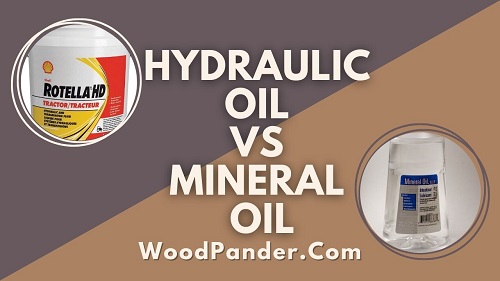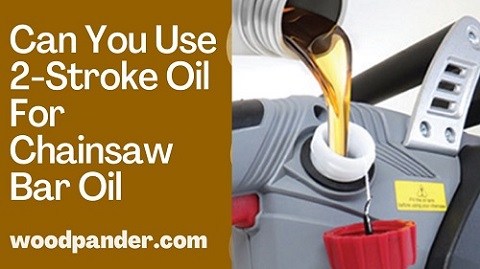Lubricants play a vital role in ensuring the smooth operation and longevity of various mechanical systems.
They reduce friction, dissipate heat, and protect components from wear and tear. When it comes to lubricants, polyalkylene glycol (PAG) oils have gained popularity due to their excellent lubricating properties and thermal stability.
However, there may be instances where one wonders if it’s possible to use a different viscosity grade, such as PAG 100 instead of PAG 150.
In this article, I’ll provide you with an informative and user-friendly guide to help you understand whether you can use PAG 100 instead of PAG 150 in your air conditioning system.
Can I Use PAG 100 Instead Of PAG 150?
Yes, in certain applications with lower loads and operating temperatures, it is possible to use PAG 100 instead of PAG 150. However, it is essential to consult manufacturer recommendations to ensure optimal performance.
PAG Lubricants
| Characteristics | PAG Lubricants |
|---|---|
| Chemical Composition | Synthetic oils made from polyalkylene glycol compounds |
| Viscosity | Available in various viscosity grades (e.g., PAG 46, PAG 100, PAG 150) |
| Thermal Stability | Excellent thermal stability |
| Oxidative Stability | High oxidative stability |
| Viscosity Index | High viscosity index |
| Lubricity | Good lubricity |
| Low Volatility | Low volatility and high flash point |
| Application Versatility | Suitable for automotive, industrial, and refrigeration systems |
| Cooling Properties | Effective lubrication and cooling properties |
| Compatibility | Compatibility with specific systems should be assessed |
| Manufacturer Guidance | Adherence to manufacturer recommendations is crucial |
One of our articles –Can You Use Air Compressor Oil for Chainsaw?
Polyalkylene glycol (PAG) lubricants are synthetic oils widely employed in automotive, industrial, and refrigeration applications.
They offer exceptional lubricating properties, including high viscosity index, thermal stability, and resistance to oxidation.
PAG lubricants are known for their excellent load-carrying capacity and anti-wear properties, making them suitable for various demanding operating conditions.
Difference Between PAG 100 and PAG 150
| PAG 100 | PAG 150 | |
|---|---|---|
| Viscosity | Lower viscosity compared to PAG 150. | Higher viscosity compared to PAG 100. |
| Numerical Value | Represents kinematic viscosity at 40°C. | Represents kinematic viscosity at 40°C. |
| Applications | Suitable for systems with lower loads and operating temperatures. | Suitable for systems with higher loads and operating temperatures. |
| Lubrication Effect | May have thinner lubricant film, potentially impacting lubrication and cooling. | Provides thicker lubricant film for enhanced lubrication and cooling. |
| Compatibility | Compatibility should be assessed with specific systems. | Compatibility should be assessed with specific systems. |
| System Requirements | Consider system requirements and specifications. | Consider system requirements and specifications. |
| Manufacturer Recommendations | Consult manufacturer recommendations for optimal performance. | Consult manufacturer recommendations for optimal performance. |
One of our articles –Can You Use 5W30 For Chainsaw Bar Oil?
PAG lubricants are available in different viscosities, with PAG 100 vs 150 being two common options.
The numbers in the product names indicate the approximate viscosity of the lubricant. PAG 100 has a lower viscosity than PAG 150, meaning it is thinner and flows more easily. This viscosity difference can have implications for certain applications and equipment.
Compatibility and Performance Considerations
When considering using PAG 100 instead of PAG 150, it is crucial to assess compatibility with the specific system in question.
Some systems are designed and optimized to work with a particular viscosity grade, and deviating from the manufacturer’s recommendations may lead to inadequate lubrication and potential system failures.
In terms of performance, using PAG 100 instead of PAG 150 can have varying outcomes depending on the system’s requirements. In applications with lower loads or operating temperatures, where the thicker viscosity of PAG 150 may not be necessary, PAG 100 can adequately lubricate the components.
However, it is essential to evaluate the system’s specific conditions and consult manufacturer recommendations to ensure optimal performance.
Factors to Consider
When deciding whether to use PAG 100 instead of PAG 150, it’s essential to consider the following factors:
Operating Conditions
The operating conditions of your equipment play a crucial role in determining the appropriate lubricant viscosity.
Higher loads, temperatures, and speeds may require a lubricant with higher viscosity, such as PAG 150, to ensure sufficient film thickness and adequate lubrication.
In contrast, less demanding conditions may allow for the use of PAG 100.
Equipment Specifications
Consult the equipment manufacturer’s specifications or guidelines to determine the recommended viscosity grade for your specific machinery.
Manufacturers often provide detailed information regarding the suitable lubricants, including viscosity requirements, to optimize performance and ensure longevity.
Compatibility with Seals and Materials
Different PAG viscosities can have varying effects on seals and materials within the equipment. Thoroughly assess the compatibility of PAG 100 or PAG 150 with the seals, gaskets, O-rings, and other components used in your machinery.
Compatibility charts or consulting with lubricant experts can help ensure the selected viscosity will not adversely affect the system.
System Design
The design and construction of your equipment may have specific requirements for lubricant viscosity.
Some systems are engineered to work optimally with a particular viscosity grade, and deviating from the recommended specifications can impact overall performance and efficiency. Consider the original design intentions when deciding between PAG 100 and PAG 150.
Cases Where PAG 100 Can Be Used Instead of PAG 150
There are situations where using PAG 100 instead of PAG 150 is acceptable.
In applications with lower loads and operating temperatures, such as certain HVAC systems or lightly loaded gearboxes, PAG 100 can provide sufficient lubrication without compromising performance. Additionally, systems that require improved energy efficiency may benefit from the lower viscosity of PAG 100.
However, it is important to note that even in these cases, thorough evaluation and consultation with manufacturers are necessary. Certain applications may have specific requirements that make PAG 150 the preferred choice, such as high-load or high-temperature conditions.
Cases Where PAG 150 Should Be Used
In scenarios where high loads or elevated temperatures are present, using PAG 150 becomes essential. PAG 150 offers a higher viscosity, which ensures an adequate lubricant film thickness under demanding operating conditions.
Systems like heavy-duty gears, compressors, and industrial machinery often require the use of PAG 150 to withstand the mechanical stresses and temperatures associated with their operation.
Using PAG 100 instead of PAG 150 in such situations can lead to insufficient lubrication, increased friction, and accelerated component wear. It is crucial to prioritize system performance and adhere to manufacturer recommendations in these cases.
Manufacturer Recommendations
To ensure optimal performance and equipment longevity, it is advisable to follow the manufacturer’s recommendations regarding lubricant selection.
Manufacturers possess in-depth knowledge of their equipment and understand the lubricants that best suit their designs. Always refer to the equipment documentation, manuals, or contact the manufacturer directly to obtain accurate information on the appropriate PAG viscosity grade.
One of our articles –Can You Use 15W40 Instead of 10W30?
Related Questions
Q1: Can PAG 100 be used interchangeably with PAG 150?
A1: The interchangeability of PAG 100 and PAG 150 depends on several factors, including equipment specifications and operating conditions. It is recommended to consult the equipment manufacturer’s guidelines to determine the suitable viscosity grade for your machinery.
Q2: What are the advantages of using PAG lubricants?
A2: PAG lubricants offer excellent lubricating properties, including high viscosity index, thermal stability, and resistance to oxidation. They have a high load-carrying capacity and provide effective wear protection, making them suitable for demanding operating conditions.
Q3: Can using the wrong PAG viscosity affect equipment performance?
A3: Yes, using an incorrect PAG viscosity can affect equipment performance. It can lead to inadequate lubrication, reduced wear protection, and potentially cause equipment malfunctions or failures.
Q4: How can I determine the appropriate PAG viscosity for my equipment?
A4: Refer to the equipment manufacturer’s recommendations and specifications. They provide detailed information regarding the suitable lubricant viscosity grade for optimal performance and longevity.
Q5: Is it necessary to flush the system when changing from PAG 150 to PAG 100?
A5: It is advisable to consult the equipment manufacturer or a lubricant expert to determine whether a system flush is necessary when changing between PAG 150 and PAG 100. They can provide guidance based on the specific equipment and lubricant compatibility.








